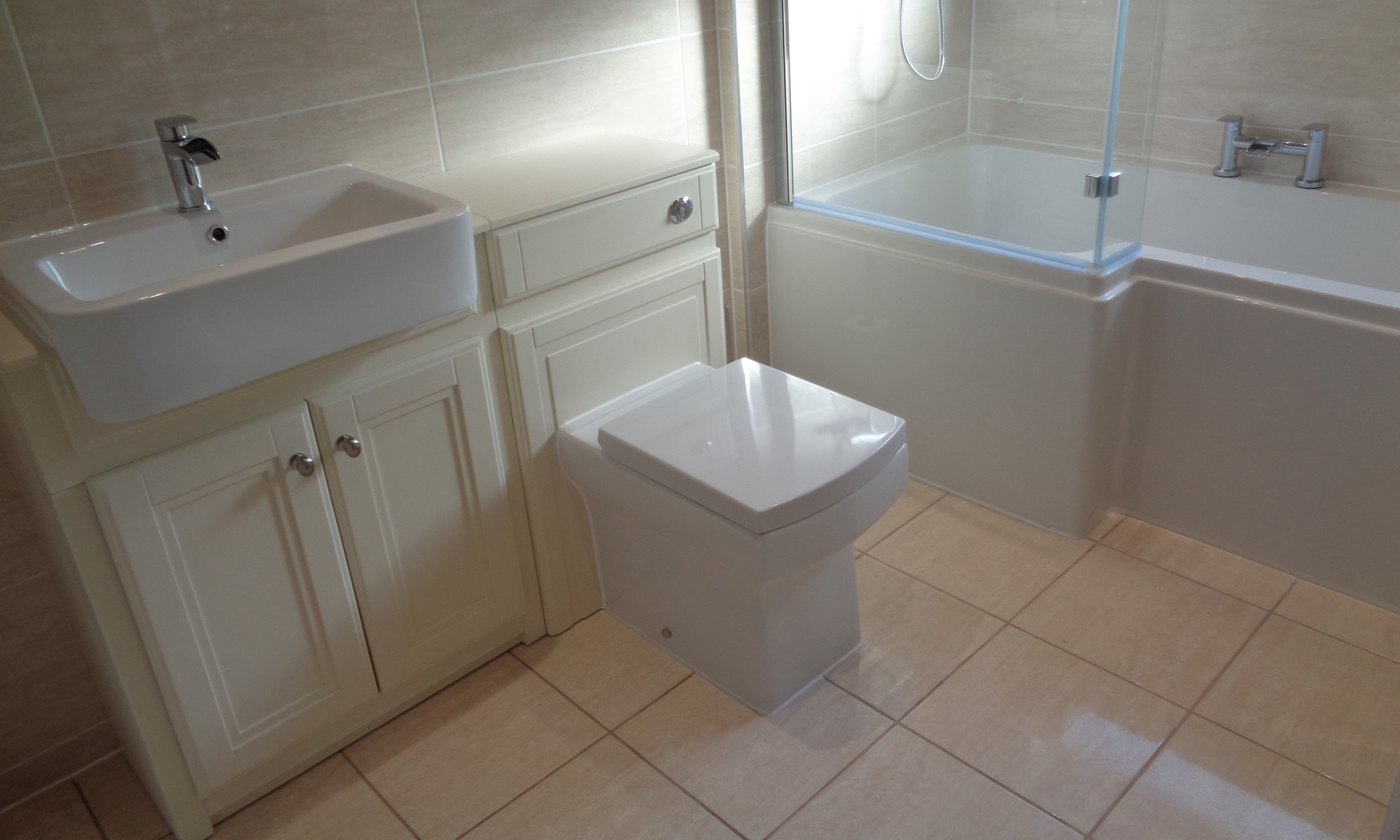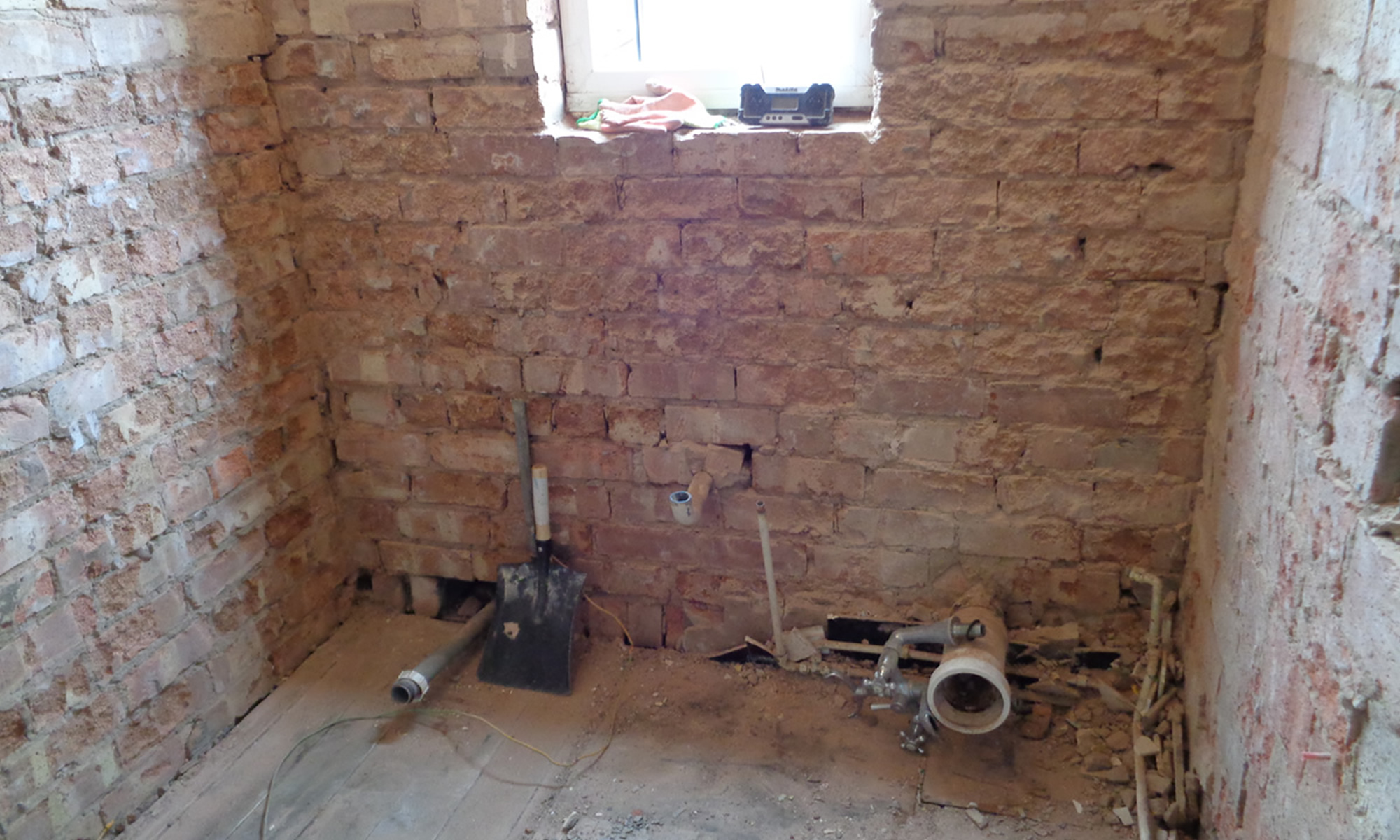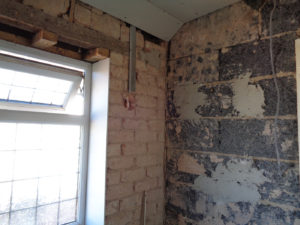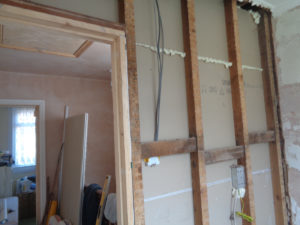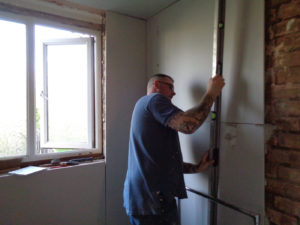Carrying out work within a bathroom is involved and it is easy for corners to be cut such as over tiling the current tiles. This is something we do not recommend. In the first instance the space between the wall and current tap may not be sufficient and secondly, if the current tiles on the wall are lose, then the fixing will not be sufficient for the weight of the new tiles. Thirdly it will reduce the size of what is most probably a very small room.
Going back to brick is the term used when working in a older house with the walls being made of brick as opposed to studded walls. With an older type of house, often the current plaster is dead and ready to fall from the bathroom walls. In this instance we always go back to brick, that is to say removing all tiles, wall coverings and plaster. Some bathrooms are made up of a different types of wall material such as brick, ash block, studded wall and in much older houses lath and plaster.
The image below shows a bathroom with type wall types, ash block and brick. Both walls the plaster has been removed exposing the block and brick behind.
The image below shows a bathroom wall built as a studded wall, this is a timber framed wall with plaster board fitted on the face. Often when taking tiles off studded walls, the plaster board is damaged beyound use. When this occurs we just remove all of the plaster board and then fit new plaster board over the wooden studded frame.
The image below shows us fitting plasted board to a brick wall. Plaster board adhesive is used to stick the plaster board to the wall.
Going back to brick, the correct way to prepare bathroom walls for tiling of course is a better solution. It will have a guaranteed outcome and will last for many years. It also gives us the confidence to be able to guarantee our work including the tiling of the bathroom.
